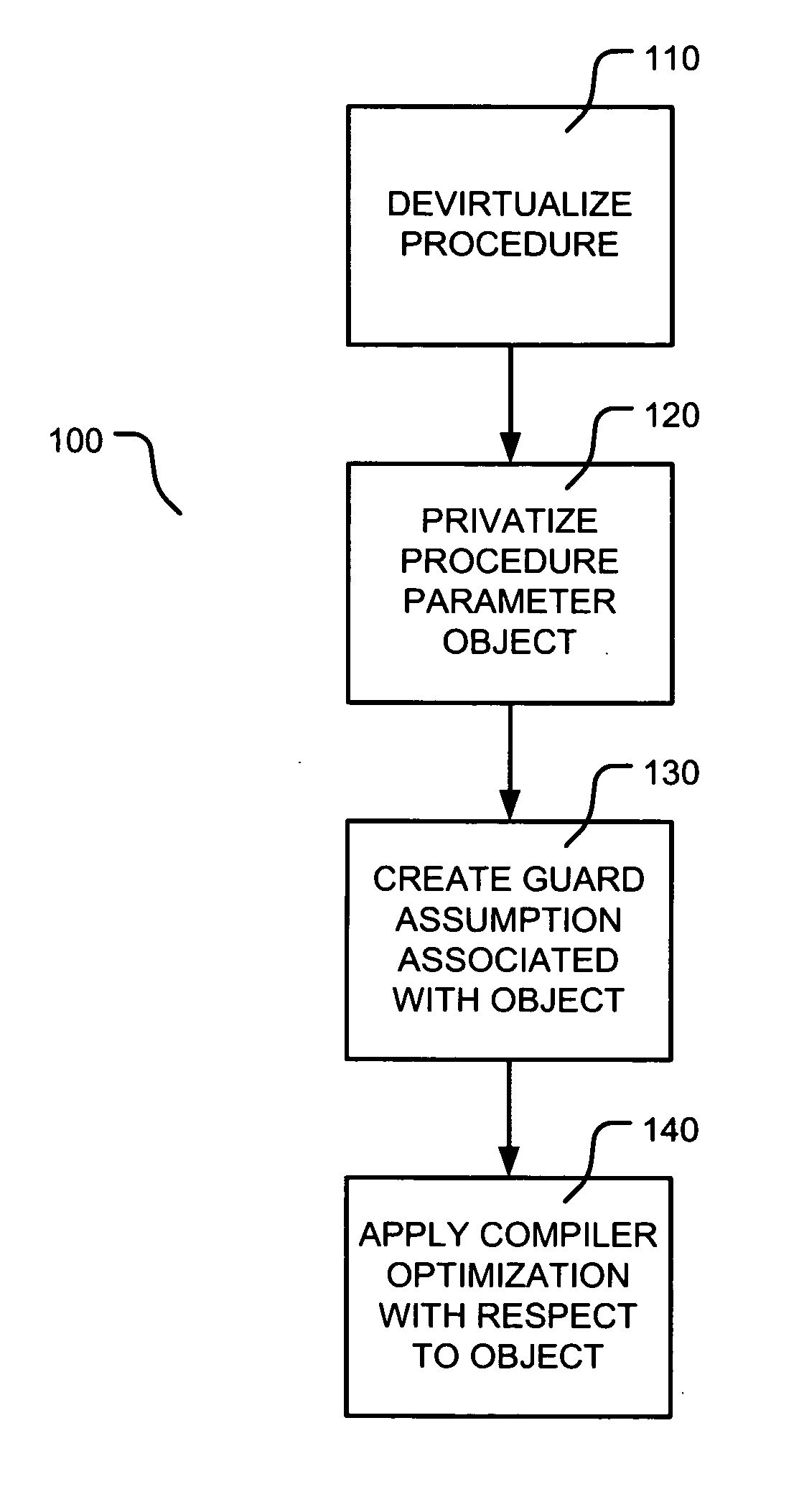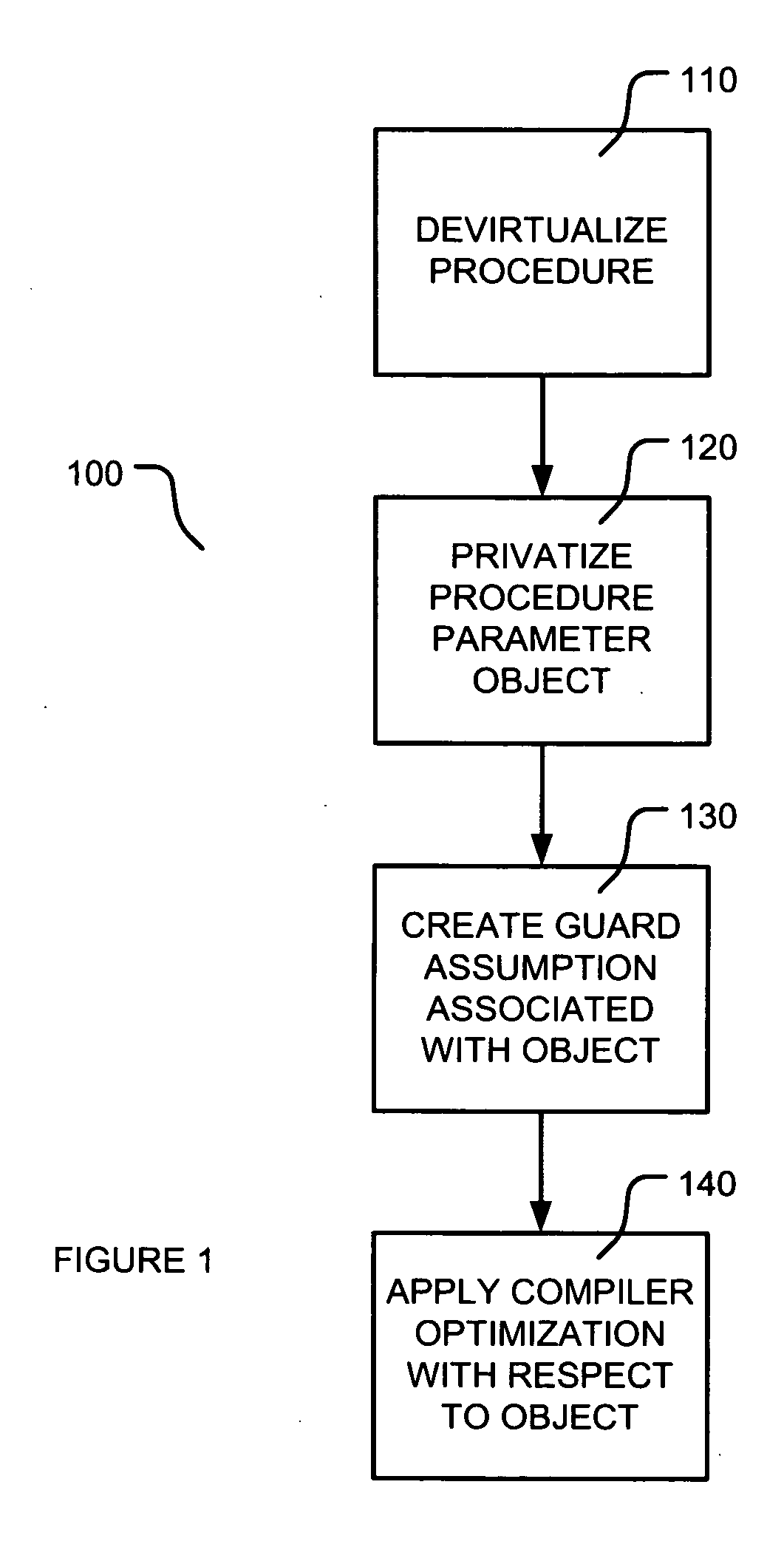Compiler optimization
a compiler and compiler technology, applied in computing, instruments, electric digital data processing, etc., can solve the problems of less effective technique when applied, less effective in statically-typed object-oriented languages, and important challenges created by virtual procedures in implementing inter-procedural optimization
- Summary
- Abstract
- Description
- Claims
- Application Information
AI Technical Summary
Benefits of technology
Problems solved by technology
Method used
Image
Examples
Embodiment Construction
[0022]FIG. 1 represents a flow diagram depicting steps in a method 100 according to an exemplary embodiment of the present invention. The method 100 can be applied, for example, during compiler optimization when there exists a non-final object (i.e. who's class can be extended or sub-typed through polymorphism) as a call parameter for a procedure at a call site that can be devirtualized as a result of compiler optimization. In the first step 110, the call site is devirtualized by inlining of the procedure. That is, a virtual procedure call to the procedure is replaced by a copy of the procedure directly at the call site. Preferably, guard code that consists of no operation (NOP) instructions is inserted before the inlined procedure. Guard assumptions are also created for invalidating the devirtualization of the procedure when the definition (i.e. hierarchy) of a class declaring the procedure is extended or when the procedure is overridden. Invalidation of a guard assumption results ...
PUM
 Login to View More
Login to View More Abstract
Description
Claims
Application Information
 Login to View More
Login to View More - R&D
- Intellectual Property
- Life Sciences
- Materials
- Tech Scout
- Unparalleled Data Quality
- Higher Quality Content
- 60% Fewer Hallucinations
Browse by: Latest US Patents, China's latest patents, Technical Efficacy Thesaurus, Application Domain, Technology Topic, Popular Technical Reports.
© 2025 PatSnap. All rights reserved.Legal|Privacy policy|Modern Slavery Act Transparency Statement|Sitemap|About US| Contact US: help@patsnap.com



